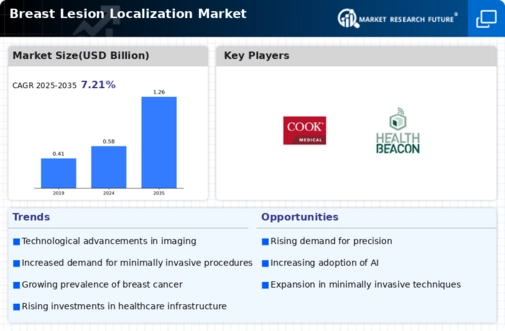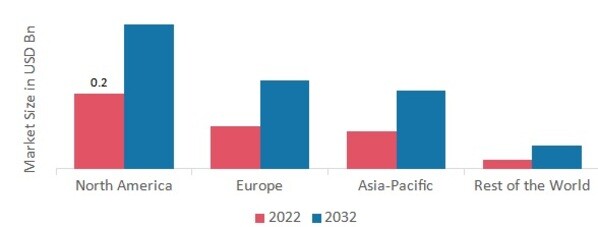Market Trends
Key Emerging Trends in the Breast Lesion Localization Market
Technological innovations in the diagnosis of breast cancer advances in microscopic surgeries, and changing focus to minimally invasive procedures have led to major shifts within the lesions localizations market (Breast). Mainly, it is an adoption trend towards wire-free techniques related to breast lesions (Watson). Besides these facts, there is a parallel development in wireless localization systems described as radioactive seed localization (RSL) (Watson). RSL involves placing a tiny radioactive seed into the patient's affected tissue so that the surgeon can see where exactly it is located before they remove it (Breast). This enhances accuracy during the lesion location process, minimizes pain experienced by patients, and enhances smoothness while performing surgery procedures. The adoption of RSL has been increasing, implying that industries are making efforts to improve both patients' and clients' experiences across all aspects. Furthermore, improvements are taking place within imaging modalities used for lesion localizations in this market. Advances like 3D mammography, also called tomography synthesis or contrast-enhanced mammography, make viewing these lesions better placed, hence achieving precise localization for them. Moreover, there is also growing interest in the inclusion of artificial intelligence (AI) into breast lesion localization systems. Imaging data can be applied to design AI algorithms that help with the detection, characterization, and localization of lesions. This move is aimed at improving the efficiency and accuracy in the diagnosis and localization of breast cancer, thus leading to improved quality of care and optimization of healthcare resources. Market dynamics are also influenced by higher demand for oncoplastic surgery and breast conservation practices. As patients increasingly opt for breast-conserving treatments, the need for accurate and efficient lesion localization becomes more important than ever before. Advanced lesion localization technologies have a big role to play in ensuring that oncoplastic surgeries achieve the greatest aesthetic outcomes possible with minimum loss of normal tissues (Breast). Nevertheless, there are some ongoing challenges facing the breast lesion localization market. Continuous debate exists about standardizing procedures and guidelines, access to advanced technology across various healthcare facilities, and issues related to cost-effectiveness/reimbursement policies (Watson). Further, patient education toward awareness of the importance of early detection through localization techniques remains one critical component of getting these technologies right.






Leave a Comment